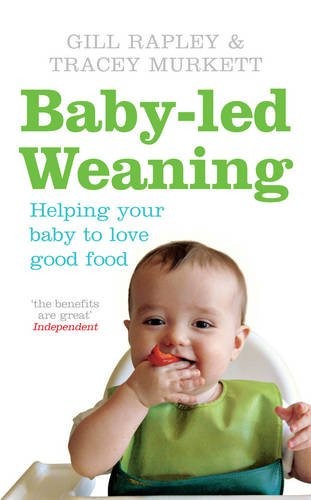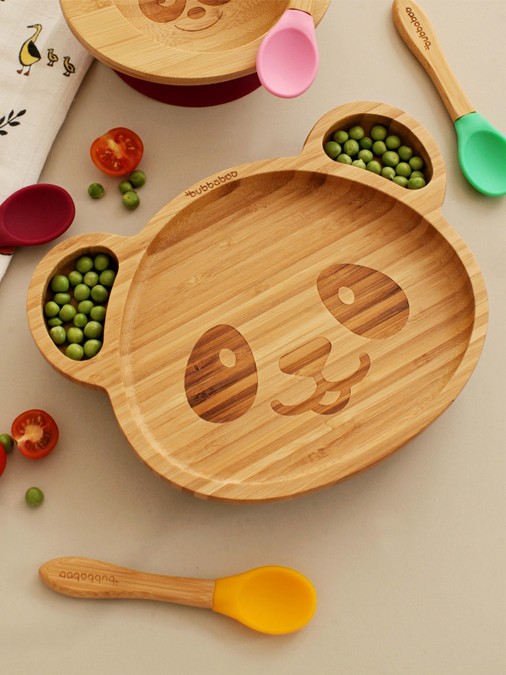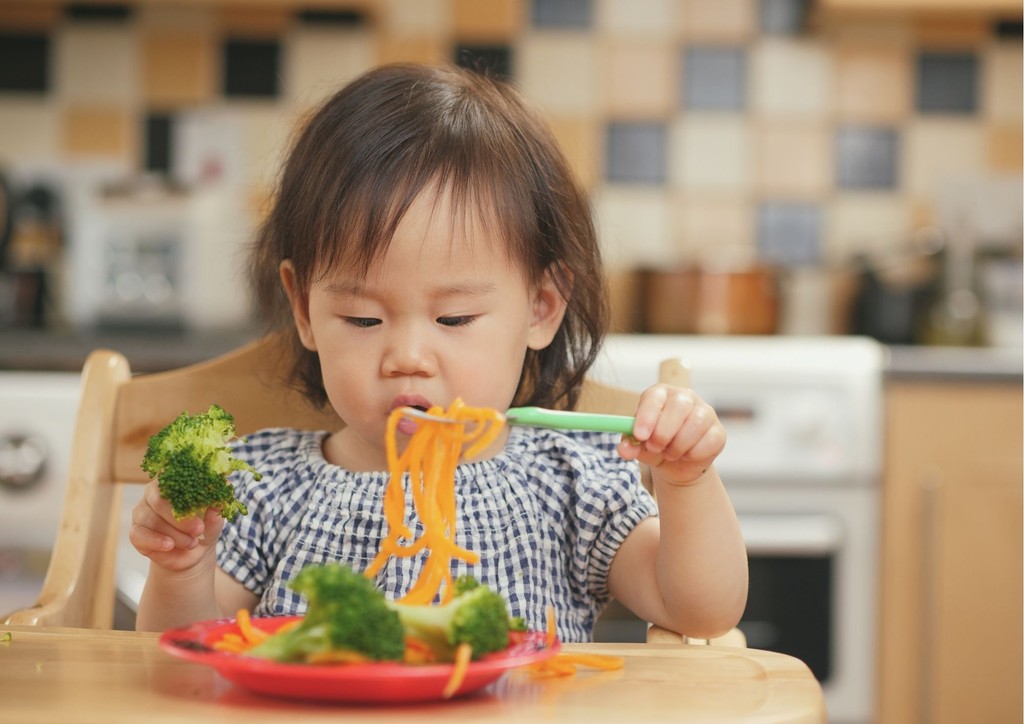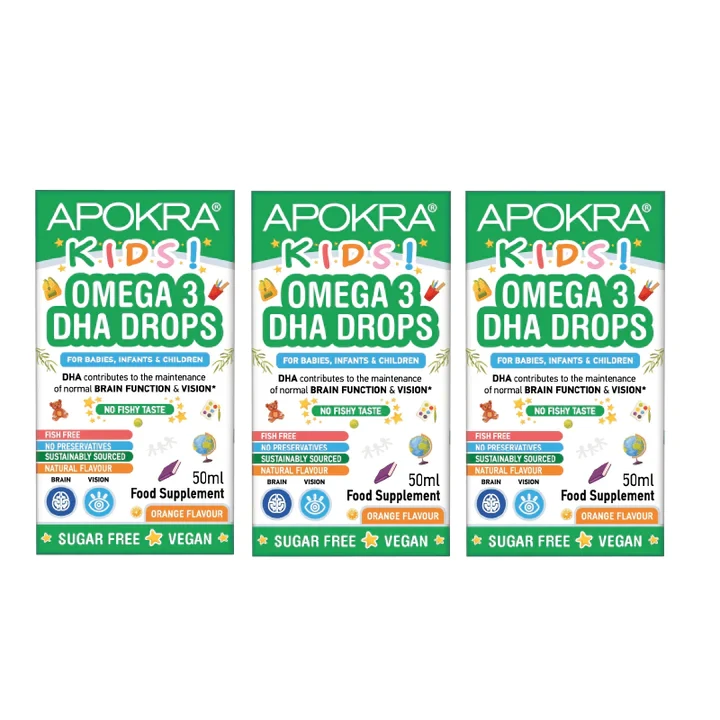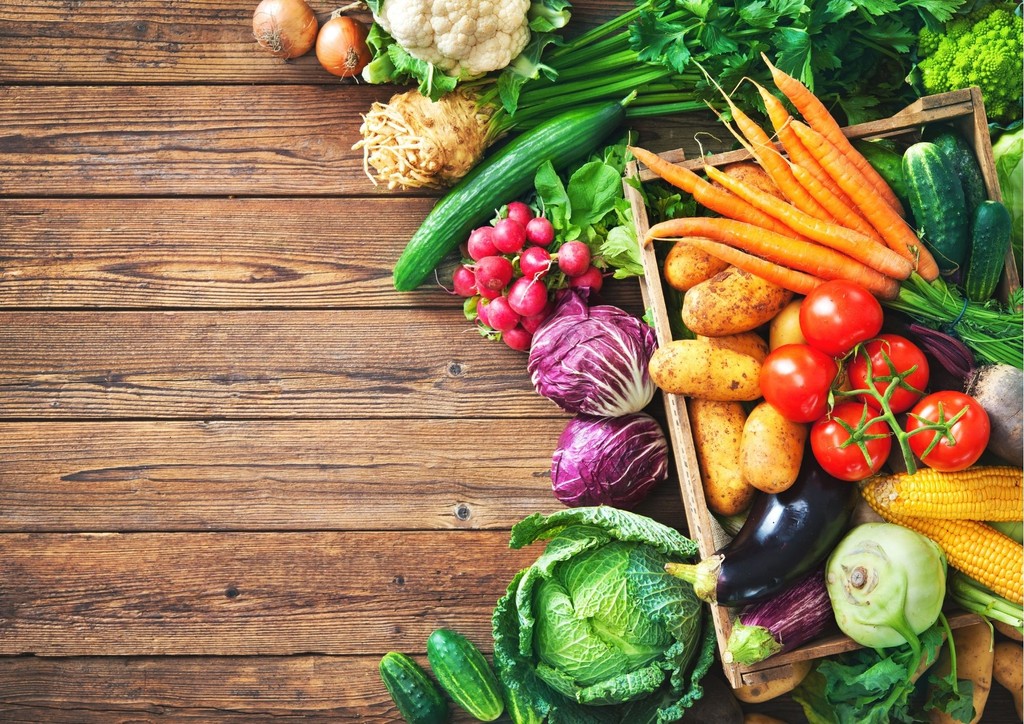Congratulations! You’ve made it through the chaos of the newborn weeks and figured out how to feed your growing baby. Finally you’re settled into a routine and now you’re looking into vegan baby led weaning (BLW).
However you’ve been feeding your baby so far, moving onto solid foods is an exciting next step. It’s the beginning of the end of the baby phase and the start of teaching lifelong eating habits.
In this guide I’m going to take you through the basics of baby-led weaning. What it is and why is it a great way to introduce your baby to solids? How do you begin your journey? And how do you do baby-led weaning in the context of plant-based, vegetarian or vegan baby-led weaning?
If you are omnivore, pescatarian, or flexitarian, this information should all still be very helpful to you. I’m just talking about plant-based babies specifically because that’s what my daughter and I are. I found it very difficult to find plant-based BLW resources when I was going through this process myself. That’s before you even get to other people’s uninformed opinions on the safety of it too.
So this is the guide to vegetarian and vegan baby-led weaning that I wish I’d had access to. I hope you find it helpful.
Table of Contents
- FREE 7-page guide to vegan baby-led weaning nutrients!
- What is weaning a baby?
- What is baby-led weaning?
- Is baby-led weaning recommended?
- What are the advantages of baby-led weaning?
- Is baby-led weaning a choking hazard?
- What age can you start baby-led weaning?
- Is it okay for a baby to be vegan or vegetarian?
- How do I start baby-led weaning?
- Are there any foods I shouldn’t give my baby?
- How do I stop my baby from choking?
- What drinks should I give my baby while baby-led weaning?
- Can my baby really get all their nutrients from a plant based diet?
BABY! This is a reusable block, so whatever edits you make in it will apply everywhere it is used. If you want to remove this disclaimer from a post then be careful to delete the parent block (type ‘Reusable Block’ – icon is lego brick), and not to delete the group, image and/or the paragraph blocks (cos then they’ll be deleted from every instance of the reusable block).
Disclaimer: This post contains ethical affiliate links that I genuinely recommend. I may receive a small percentage of any purchases you make as a result of clicking those links. This comes at no extra cost to you and helps me to run this site. Read my full disclosure
What is weaning a baby?
Weaning is the process of helping your baby gradually transition from an exclusively liquid diet onto exclusively solid food.
It’s very important to known that this takes at least 6 months, usually more. In the case of babies who are exclusively breastfed, it can take years before your child gives up milk completely. This is perfectly biologically normal. Breastmilk and nursing provide a great many physical, emotional, psychological and developmental benefits way beyond babyhood.
The World Health Organisation and UNICEF recommend that babies are exclusively breastfed for the first 6 months of life. Ideally they’ll be offered breast milk until 2 years old, or older if mother and child are happy with this.
If you’re feeding your baby formula, this is all they should be given up to the age of 6 months. After the age of 12 months, they should be gaining more and more of their nutrition from solid food. They can then start gradually moving away from formula and towards a plant-based milk.
What is baby-led weaning?
Baby-led weaning is the traditional practice of gradually introducing different solid foods to your baby. It involves offering babies food in a simple form and allowing them to explore it in their own time. The term “baby-led weaning” was coined by infant and child feeding specialist Gail Rapley.
If you believe baby-led weaning is the right choice for you, I strongly urge you to buy Rapley’s book. There have been many copycat books claiming to be about baby-led weaning. But many of them don’t follow BLW as it should be done and you can easily get incorrect information.
Mushing up or puréeing solid food and spoon-feeding the baby became popular in the mid-20th century. However, the BLW approach is to slowly introduce new solid foods. The aim is that eventually the baby is eating the same food as their parents at every meal.
The early stages of the baby-led weaning process are a bit slow and very messy! But it’s very easy to do. You just offer new foods in their simplest form, one at a time so you can pinpoint any allergies.
Baby is given the food and left to explore, rather than “helped” to eat or spoon-fed by their parents. Gradually the baby learns how to chew, swallow and self-feed. This way there is no need to help them transition from purées to solid food further down the line.
You don’t have to do a lot of extra work or make separate dishes for your baby in this journey. Honestly, stay away from the “baby led weaning” recipe books! There’s no need. Just introduce new foods one at a time (we started with steamed carrots). Then gradually add more and before long you can give your baby the same dishes you’re eating.
Is baby-led weaning recommended?
No particular form of weaning is recommended by the NHS or the World Health Organisation. They simply recommend that weaning is done safely. It should also be done at an appropriate age and with an awareness of the nutritional needs of small children.
What are the advantages of baby-led weaning?
The main advantages of baby-led weaning are:
- It teaches your baby about food Everyday experiences teach them so much about the world. Offering them food in a basic form contributes to their learning and understanding.
- Leads to easier and less time-consuming meal times. Starting with a baby eats what you eat lays the groundwork for an older child who does the same. Hopefully you won’t need to cook separate meals for your children later on. It should also be easier to get them to try new food.
- It establishes trust in your baby’s abilities. Baby-led weaning offers your baby complete control of what and how much they eat. This establishes general principle that your baby has as much right to feed themselves as much as you do.
- May lead to a more open-minded, less “picky” eater. Baby-led weaning often leads to children who are more open-minded about trying new food. My 4 year old daughter Ursula is always happy to try something new. She might not like it, but she’ll try it!
- Babies learn how to eat safely. Exploring solid food instead of purées helps babies learn more about what is chewable and what is not. They learn how much a food needs to be chewed in order to swallow and so on.
- It’s easy and relatively stress-free With baby-led weaning there’s no need for games and tricks to get them to eat. There’s no, “here comes the big aeroplane”, or forcing food into your baby’s mouth as with spoon-feeding.
- Babies are included in meal times. Family meals help babies to learn all about the social aspects of food, not just how to eat. Dinner-time conversation, etiquette and any religious or cultural practices all add to baby’s experience of the world.
- It’s fun! Babies love getting involved with their food, exploring the different textures, tastes and shapes you’re offering them. It’s so much fun to watch as their parent too.
Is baby-led weaning a choking hazard?
A lot of people are concerned that going straight for solid, chunky foods presents a choking hazard to your baby. Baby-led weaning is no more a choking risk than spoon-feeding your baby purée. In fact, it’s less of a risk than soft foods, since the baby is control of feeding themselves.
As long as your baby is sitting up straight and is controlling their own food intake, they are perfectly safe.
What alarms people is the gag reflex being regularly triggered during BLW. The gag reflex is a throat spasm triggered by an object in the mouth or throat.
In babies, the gag reflex is triggered much further forward than it is in adults. For this reason they are more likely to gag in early feeding.
Gagging is NOT the same as choking, however. Although it looks and sounds alarming sometimes, it honestly poses no threat to your baby’s wellbeing.
If your baby is choking, they will be very silent and turn blue. The NHS website has a full guide on how to prevent your child from choking at different ages. You can also download the very excellent British Red Cross Paediatric First Aid app for free. If you’re still worried about choking, consider doing a baby first aid workshop. That way, if anything did happen, you would feel confident about handling it.
What age can you start baby-led weaning?
You can begin baby led weaning once they are over 6 months old and have reached the following milestones:
- Able to sit upright unaided, holding their head steady by themselves
- Able to coordinate eyes and hands to pick something up and put it in their mouth
- Lost the tongue thrust reflex. This is where baby will automatically push foreign objects out of their mouth with their tongue
However, the key phrase here is BABY-led weaning. Listen to and observe your baby. Make a judgement based on their unique development. Just because you can start weaning at 6 months doesn’t mean you have to! Be intuitive about the right time to start.
Is it okay for a baby to be vegan or vegetarian?
Yes, it is okay for a baby to be vegan or vegetarian. With enough thought and planning, babies are able get all the nutrients they need from a vegan or vegetarian diet. Just make sure you are conscientious of what nutrients they’re getting.
A bad vegan or vegetarian diet is just as bad for you and your baby as a bad omnivore one. It’s also easier to fall into as some nutrients are harder to include on a plant-based diet. The main ones to consider during the baby-led weaning process are:
Vitamin B12
B12 is something vegans in particular need to be conscious of.
Vegan foods that contain B12 either naturally or through fortification include:
- Nutritional yeast flakes (e.g. Engevita)
- Marmite
- Plant-based milk alternatives including soy, almond and oat milks
- Soya yoghurts
Do check the labels of plant-based milks and yoghurts to ensure B12 content.
I would personally recommend making your life easy by choosing a baby-friendly multivitamin that contains B12. That way you know your baby is getting the recommended daily dose. I gave Ursula Nature’s Aid Mini Drops Multivitamins, which deliver Vitamins A, B, C and D. However, be aware that the Vitamin D is not vegan. If you want a high-quality Vitamin B12 supplement without Vitamin D, Nature’s Aid offer an alternative called Immune Plus.
Omega-3
Omega-3 essential fatty acids are incredibly important for your baby’s brain development, as well as their sleep. Some good vegan sources of omega-3 oils include:
- Flaxseed (linseed) oil or ground flaxseed
- Walnuts – babies should ONLY be given walnuts that have been ground up to reduce the risk of choking
- Ground chia seeds
- Hemp seeds and oil (note that hemp oil loses its nutritional value when cooked)
Again you could consider a vegan omega-3 supplement suitable for babies. APOKRA do a high quality vegan DHA drop for kids – you can get 20% off your first order with my referral link HERE.
There are other nutrients such as iodine that are harder to come by on a plant-based diet. However, breastfed babies will get most of these from breast milk. Likewise formula contains a carefully considered blend of vitamins and minerals to meet your baby’s nutritional needs.
I’ve put together a Vegan Baby and Toddler Nutrient Guide below too. It lists plant-based sources of all the vitamins and minerals you need to think about. It’s completely free, just sign up below and download it now!
How do I start baby-led weaning?
You can start the baby-led weaning journey in one of two ways. You can just sit your baby on your lap and let them try your own food. Or you can sit baby in their own high chair and serve them finger foods of their own. Whichever method you choose, start including baby in your own meal times rather than feeding them separately.
If you choose to let them eat your food, make sure to stop cooking with salt for now. Babies up to 12 months of age can only have a maximum of 1mg salt a day (0.4g sodium).
What foods do you start with?
It’s a good idea to start baby led weaning by introducing one new food at a time. This means that you can easily identify any allergens. You should also start with savoury foods first, introducing all the major vegetables before moving onto fruit. This is for two reasons:
- You don’t want your baby’s first foods to be sweet. They may then have trouble accepting savoury foods afterwards
- Although the sugars in fruit are natural, they do still contain sugar. Fruit can therefore cause dental issues in your baby’s fresh new teeth.
Start by steaming or lightly roasting vegetables cut into long strips. You want foods that baby can easily grab, such as carrot sticks, broccoli florets, peppers, courgettes and aubergines.
As you move on, you can start offering multiple vegetables at once. Then gradually introduce proteins and carbohydrates including tofu, pasta, beans and legumes. Once you’ve covered savoury food, then you can start to introduce fruit, again one at a time.
At this stage, the process is purely about baby learning to pick up food and eat it. It is not about nutrition yet. Their main source of nutrients will still be breastmilk and/or formula for some months to come. The baby-led weaning philosophy says, “Food before one is just for fun”.
Always time your BLW sessions for when baby is both well-rested and full from a breastmilk/formula feed . Again, you are not trying to use food to give nutrition or fill them up at this stage. Your baby will learn and enjoy the process much more if they’re not hungry or tired.
Are there any foods I shouldn’t give my baby?
There is a full list of foods to avoid giving your baby on the NHS website. Vegans and vegetarians need to avoid the following:
- Whole nuts
- All sugar including maple syrup, agave syrup and coconut sugar
- Salt and salty foods such as crisps, takeaways, ready meals and processed meat substitutes
- Saturated fat
- Mould-ripened, soft or unpasteurised cheeses such as blue cheese and camembert
- Raw or lightly-cooked eggs
- Rice milk
- Chocolate, cocoa or cacao
- Honey
My vegan baby led weaning nutrient guide contains a handy printable list of the vegan foods you should avoid.
How do I stop my baby from choking?
Always cut round and oval foods in half and lengthways. This reduces the slightly higher risk of choking on these foods. This includes cherry and baby plum tomatoes, grapes and olives. You should continue to do this into later childhood, at least until age 5.
What drinks should I give my baby while baby-led weaning?
Only give your baby water, breastmilk or formula while weaning, offering a small amount during each meal time. I recommend offering an open cup such as a small shot glass. This way you avoid them learning incorrect sipping techniques from beakers or sippy cups.
Once they’re 12 months old and getting most of their nutrients from solids, you can offer a low sodium plant milk. Unsweetened oat milk is our personal preference. Never give rice milk to children under 5 years old due to its arsenic content.
Can my baby really get all their nutrients from a plant based diet?
Yes! Babies are just as able to gain all their nutrients from a plant based diet as you are. However you do need to be conscientious and thoughtful about nutrition. Consider supplementing with baby-friendly supplements to ensure complete balance.
If you’re uncertain about how to offer a nutritious plant based diet to your baby, here are some excellent resources:
- A Nutrition Guide For Vegans Under Five Years Old — The Vegan Society
- Raising Vegan Children — Viva!
- Vegetarian & Vegan Mother & Baby Guide — Viva!
- Eating Well: Vegan Infants & Under-5s — First Steps Nutrition Trust
I hope you’ve enjoyed my guide to the basics of vegan and vegetarian baby led weaning. Good luck with you baby’s weaning journey and enjoy the ride!
